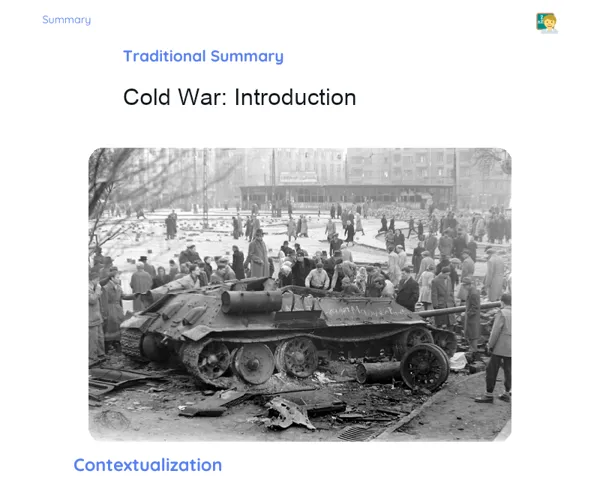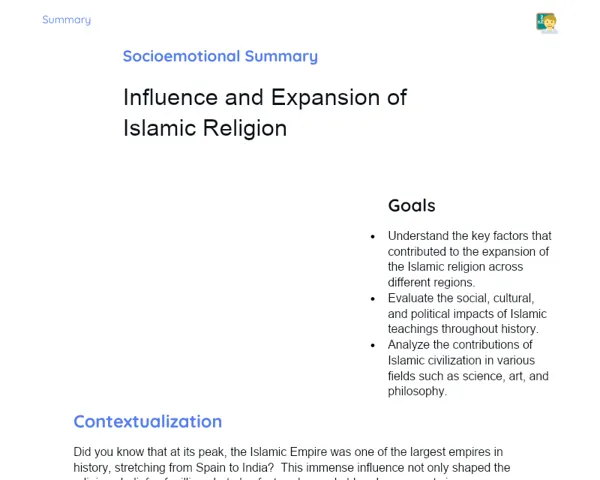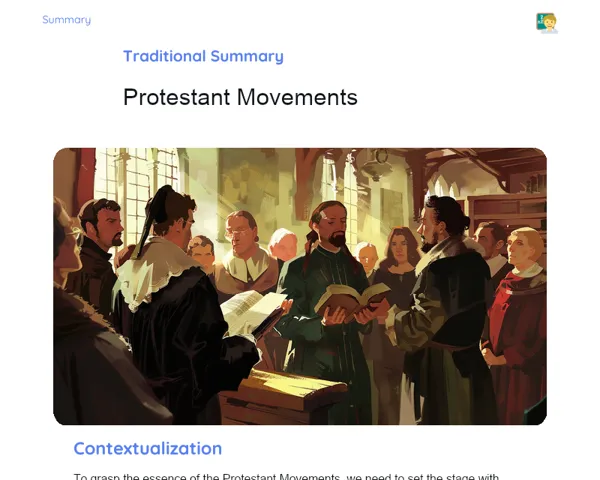Goals
1. Understand the processes of unification in Italy and Germany.
2. Identify the main leaders and figures involved in the unifications.
3. Analyze the political and social impacts of the unifications.
4. Understand the formation and organization of the resulting nation-states.
Contextualization
In the 19th century, Europe experienced significant political and social shifts. The unifications of Italy and Germany were intricate processes that led to the establishment of new nation-states. These events altered Europe's political landscape and have had lasting effects that still resonate today. For example, the unification of Italy saw figures like Giuseppe Garibaldi, a national hero who led pivotal military campaigns for unification. Meanwhile, in Germany, Otto von Bismarck, the 'Iron Chancellor', played a crucial role by employing a mix of diplomacy and warfare to bring together the various German states under Prussian dominance. Grasping these processes is vital to understanding how national identities were formed and the ensuing conflicts.
Subject Relevance
To Remember!
Historical Context of Europe in the 19th Century
The 19th century was a period marked by significant political, social, and economic transformation in Europe. The Industrial Revolution, the rise of nationalist movements, and conflicts among empires characterized this era, creating an environment conducive for the Italian and German unifications. Fragmentation into smaller states and foreign interventions posed challenges for the unification leaders.
-
Industrial Revolutions: Economic shifts that ushered in technological advancements and changes in social hierarchy.
-
Nationalist Movements: The urge for unification and independence gathered momentum, especially in areas lacking cohesion.
-
Conflicts among Empires: Power struggles among European nations directly affected the unification endeavors.
Key Leaders and Figures Involved
Prominent figures like Giuseppe Garibaldi in Italy and Otto von Bismarck in Germany were pivotal for the unification processes. Garibaldi's military forays and charisma rallied popular support for Italy's unification. On the other hand, Bismarck, termed as the 'Iron Chancellor', adeptly used diplomatic and military tactics to achieve German unification under Prussian leadership.
-
Giuseppe Garibaldi: Celebrated military leader who played an essential role in the unification of Italy.
-
Otto von Bismarck: Prussian chancellor who orchestrated German unification through strategic diplomacy and conflict.
-
Military Expeditions: These efforts bolstered territorial unity and popular support for the unifying mission.
Political and Social Impacts of the Unifications
The unifications of Italy and Germany had significant political and social ramifications. The emergence of robust, centralized nation-states reshaped the power balance in Europe, leading to new alliances and conflicts. Socially, these unifications fostered a stronger sense of national identity and drove modernization in infrastructure and institutions.
-
Creation of Nation-States: Development of unified and centralized political entities.
-
Alteration of the Balance of Power: New alliances and rivalries emerged, influencing the landscape of European politics.
-
Sense of National Identity: Strengthening of nationalism and social unity among the newly formed states.
Practical Applications
-
Diplomacy: Understanding European unifications is crucial for diplomats working on international alliances and rivalries.
-
International Relations: Analysts leverage these historical events to forecast and interpret state interactions.
-
Journalism: Reporters focusing on politics and history draw upon past events to give context to current affairs.
Key Terms
-
Italian Unification: The process of bringing together various Italian states into the single Kingdom of Italy during the 19th century.
-
German Unification: The uniting of German states under Prussian leadership, culminating in the establishment of the German Empire.
-
Giuseppe Garibaldi: A military leader and central figure in Italian unification, famed for his campaigns and popular support.
-
Otto von Bismarck: Prussian chancellor who successfully united Germany through a combination of diplomacy and military actions.
-
Nation-States: Cohesively structured and centralized political entities resulting from the merging of fragmented regions.
Questions for Reflections
-
How do the process of unifications in Italy and Germany compare to similar movements for unity or division in different parts of the world?
-
In what ways can the strategies employed by Garibaldi and Bismarck be relevant to modern political scenarios?
-
What are the implications of these unifications on the current political and social fabric of Europe?
Historical Debate: Influences of the Unifications on Modern Europe
To reinforce understanding of the Italian and German unifications, students will engage in a historical debate discussing how these processes have influenced modern Europe’s political and social landscape.
Instructions
-
Divide the class into two groups: one focusing on Italy and the other on Germany.
-
Each group should research and build arguments on how their respective unifications impacted modern Europe and the formation of the European Union.
-
Groups must present their perspectives in a structured manner, supported by historical and current examples.
-
Following the presentations, facilitate a debate where groups can pose questions and counter each other’s arguments.
-
Conclude with an open discussion highlighting the similarities and differences between the unification processes and their ongoing effects.



